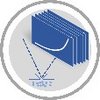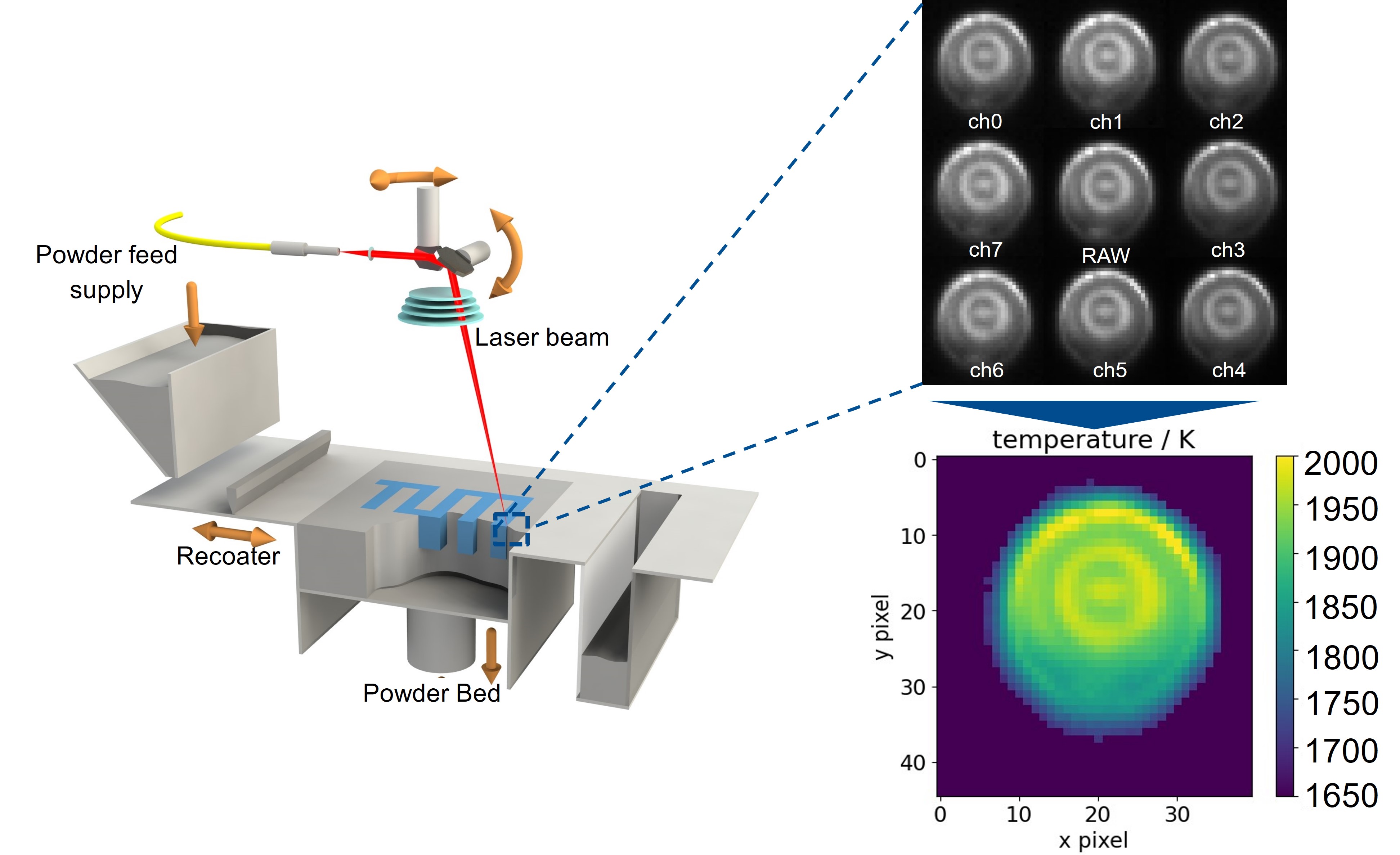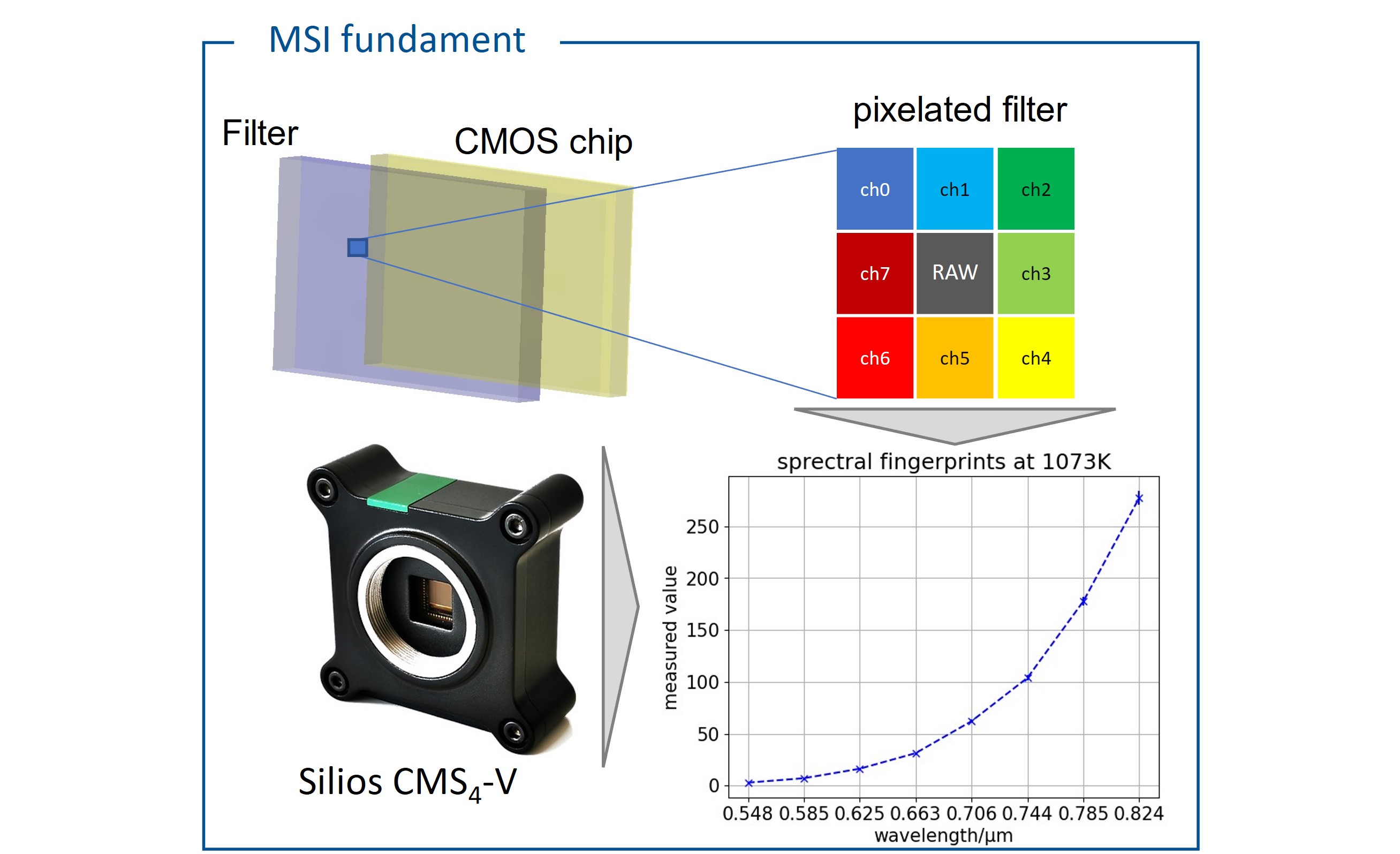
Process Monitoring in PBF-LB/M
The limited process understanding of highly complex physical phenomena has hindered the further development of Powder Bed Fusion of Metal with Laser Beam (PBF-LB/M). In the research area "Process Monitoring in PBF-LB /M", a monitoring system based on multispectral imaging for determining the absolute surface temperature of the melt pool is being developed.
Aim
As a thermally driven process, in PBF-LB/M, the laser-material interaction determines the melt pool behaviour. Various part properties have been found to be associated with the instability of the melt pool, whose dynamics and stability are driven by its temperature field. Accordingly, melt pool temperature monitoring is particularly crucial for product quality control. However, the major difficulties in melt pool temperature monitoring are the localized and extremely high heating and cooling rates, as well as the unknown radiation emissivity during the process. As a result, the understanding of these process fundamentals is limited. Therefore, the aim of the research field is divided into the following:
- Determination of the absolute surface temperature distribution of the melt pool
- Understanding the hidden patterns of the melt pool temperature distribution and part properties
Methodology
Since the emissivity of the material can change continuously due to the extreme temperature gradients during the laser-material interaction, the quantitative measurement of the absolute temperature is challenging. To achieve the above goals, a multispectral camera is integrated into the optical setup to capture the spectral radiance of the process area. With a suitable material emissivity model, the surface temperature can be determined by solving a curve fit problem. More precisely, the algorithm minimizes the spectral distance between the measured signal and the ground truth according to Plank’s law. With a known temperature distribution, the process insight of PBF-LB/M and the relationship between process parameters and melt pool development can be deduced. In addition, the hidden pattern between the melt pool temperature and the component properties can be correlated with Graph Neural Networks (GNN) or other machine learning algorithms.
Project Relations and Funding
The project Multispectral Imaging for Laser-based Additive Manufacturing "MusTAM" is funded by the International Graduate School of Science and Engineering (IGSSE) in the framework of the International Project Teams (IPT). The project is conducted together with Technion, the Israel Institute of Technology.

